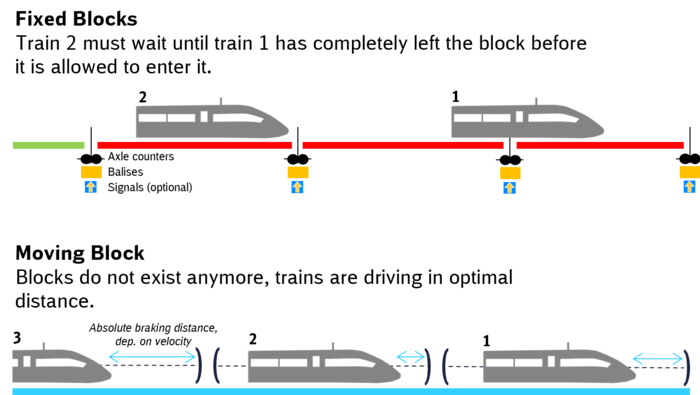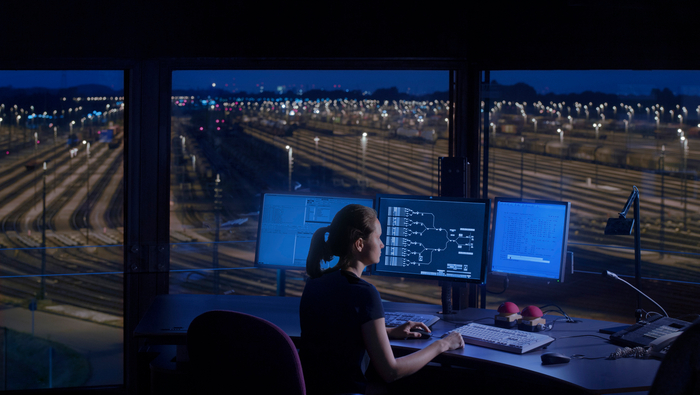Advanced Protection System
Advanced Protection System (APS) – Security Technology of Tomorrow
In addition to the costly construction of new lines, Deutsche Bahn is primarily focusing on running more trains on the existing network. Today, the maximum number of trains on the network is limited by conventional technology. To guarantee safe train traffic, trains must keep a safe distance from each other due to their long braking distance. For this purpose, a line is nowadays divided into stationary, physical block sections. A block is closed to the following train as long as the preceding train has not yet left them. To ensure that the train leaves the block completely and has not lost any wagons, there are so-called axle counters at the beginning and end of a block on the track, which count the axles on entry and exit. Only when this matches, i.e. the train is complete, the block is released.
With the Advanced Protection System (APS), Digitale Schiene Deutschland is working together with European partners on a modern, train-oriented security technology that breaks away from securing train traffic via blocks and introduces a new type of security logic. Here, the safety distance is no longer controlled statically via block sections on a line, but trains are dynamically located with on the rail network. Trains can then run at individual distances depending on their current speed (so-called "moving blocks"). Train integrity must be monitored independently by the vehicle. For localization, trackside and on-board localization systems can be combined. On the infrastructure side, the APS combines the functions of the signal box and automatic train control in one system and uses ETCS Level 2, the European standard for train control.

The Advantages at a Glance
Operation in "moving blocks" allows trains to run at optimal and flexible intervals, so that more trains can be used on the same rail line. This results in a significant capacity gain in the rail network. At the same time, the technology in the track can be reduced to a minimum. This increases reliability, as fewer infrastructure elements lead to fewer failures. At the same time, maintenance costs are reduced. Also, a security logic set up in this way no longer has to rely on fixed tracks but is able to secure a train at all times during its journey from any starting point to any destination. This allows significantly more flexibility in operational management. The safety logic of today's signal boxes is track-bound. Each route with its characteristics has to be individually planned and elaborately created in the interlocking software, the so-called project planning. The independence of APS from trackside systems (e.g. train detection systems) also eliminates the need for specific, physical project planning of routes. This enables a significantly faster rail line project planning.
The Technology in Action

The development and prototyping of APS and other system components has begun. The aim is that by the early 2030s, an approved system with the basic functions of APS will provide security for a selected route. Based on this, APS is to be developed until it is ready for series production and then used as a standard for all new control and safety technology projects. In the Advanced Digital Infrastructure (ADI) pilot project, an APS test environment is being set up for the first time. The pilot project is being built on the Remstalbahn, line S2, between Waiblingen and Schorndorf near Stuttgart. From 2024, essential functionalities of APS will also be tested there.
The Advanced Protection System will be thought of in European terms right from the start. Within the framework of RCA (Reference CCS Architecture, an initiative of ERTMS user grup (EUG) and EULYNX), a standardized control and protection technology with APS as its core is being redesigned together with other European infrastructure operators. Through standardized interfaces, harmonized technology and uniform operational rules, APS supports the desired European interoperability.
